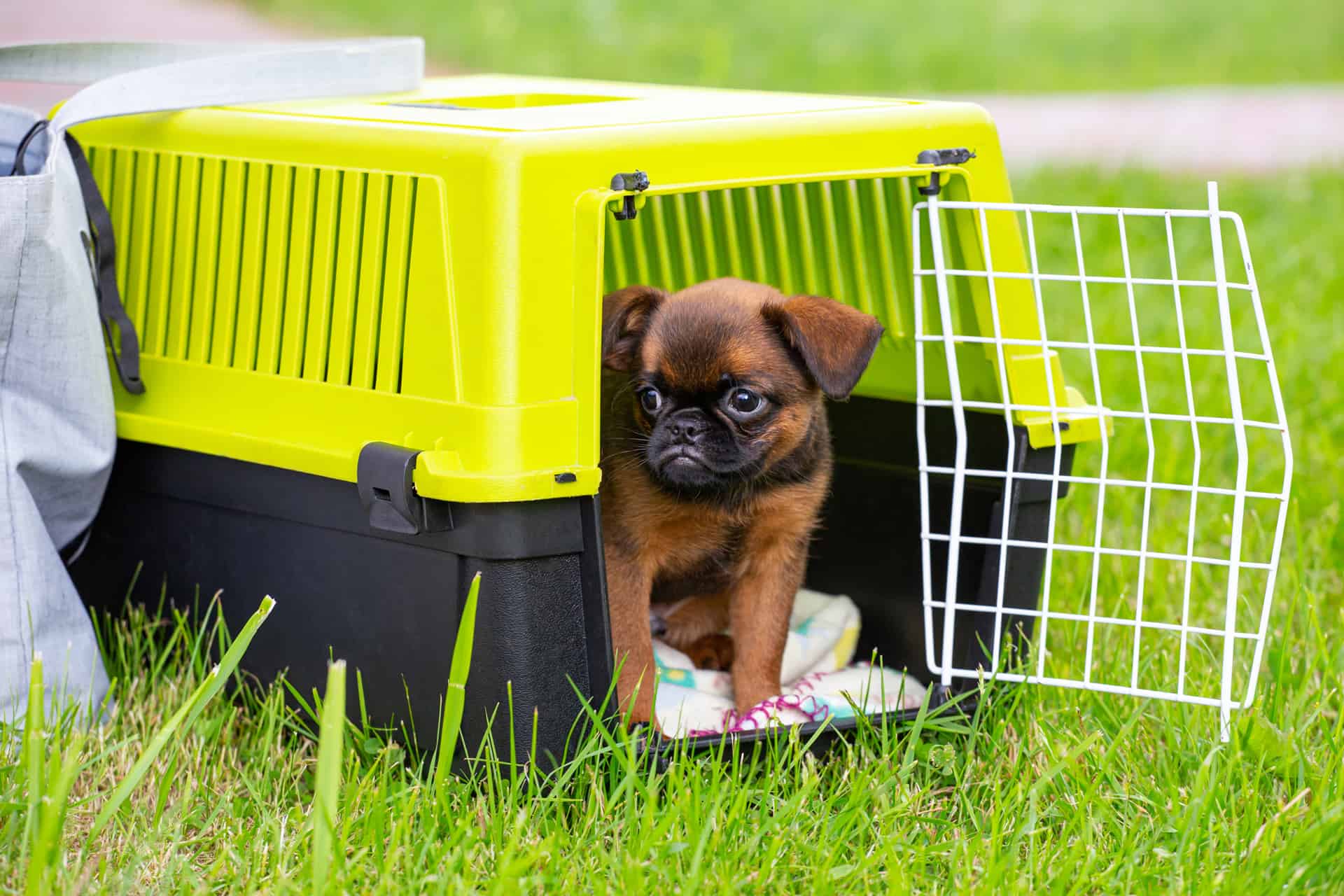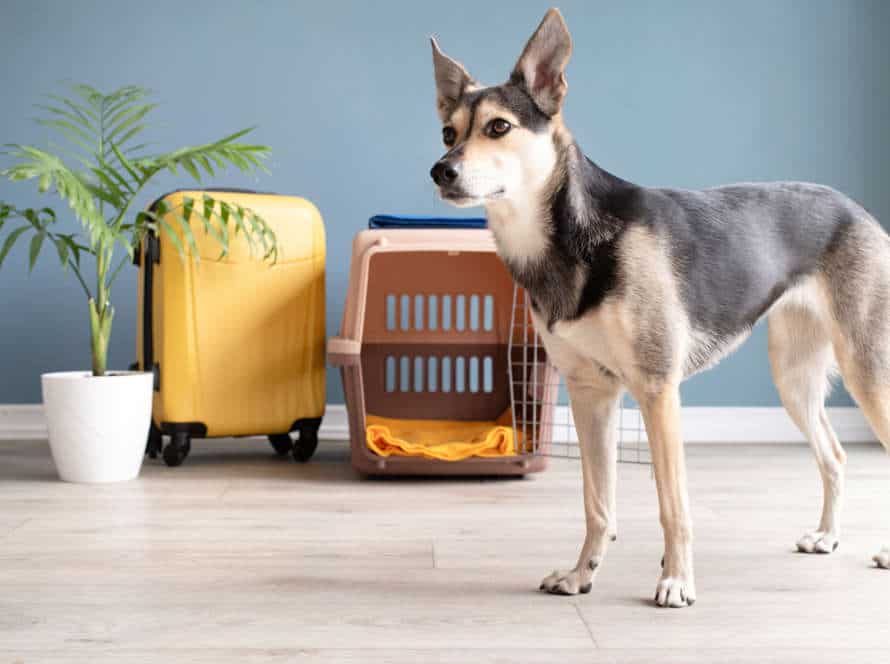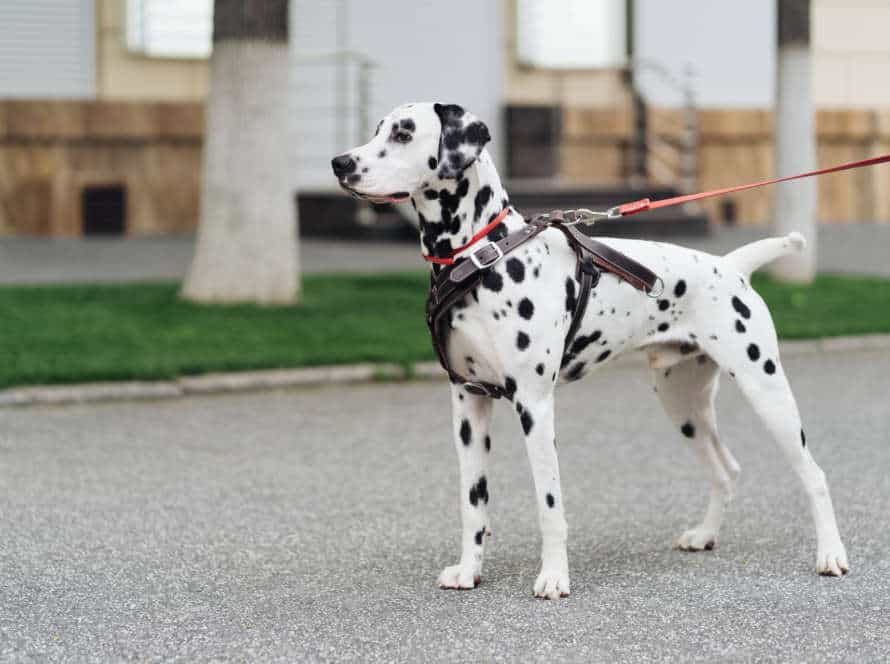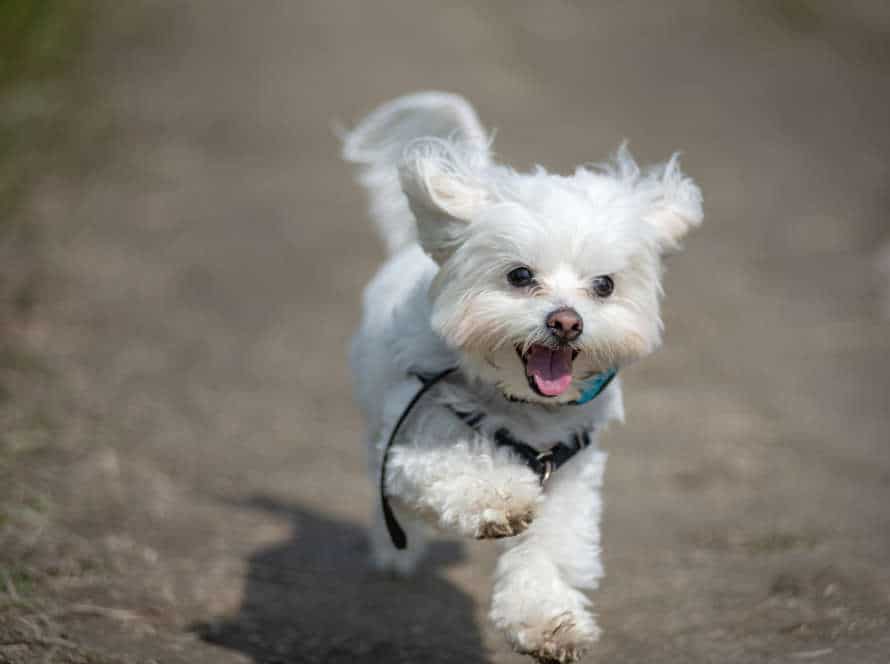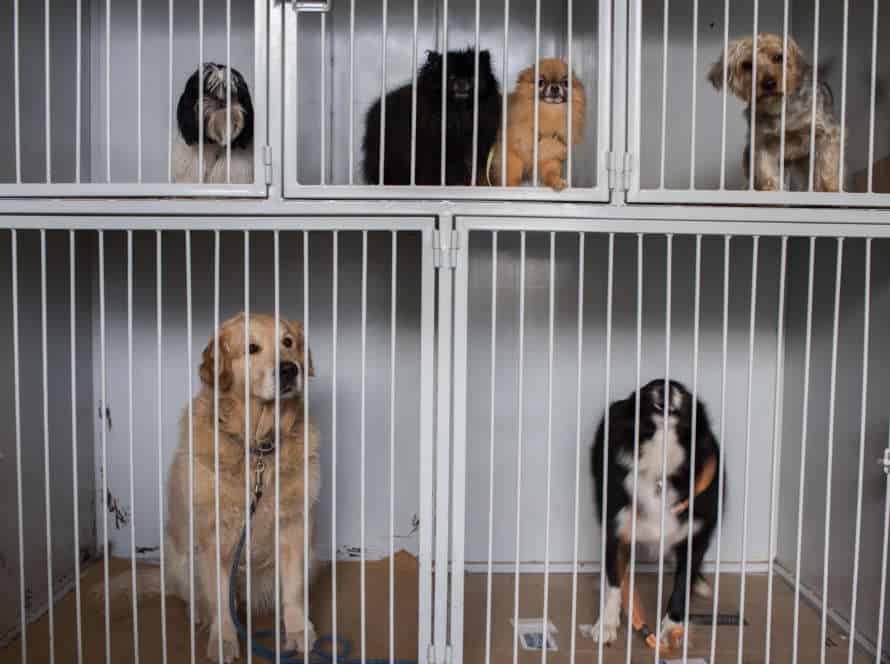The Importance of Positive Reinforcement in Crate Training
Crate training is a way to get your pup or dog to be comfy in the crate. It’s important to use positive reinforcement to make sure that the pup or dog feels safe. This article will explain how to use positive reinforcement for successful crate training.
Why positive reinforcement works better than punishment in training
Positive reinforcement is better than punishment for training. It reinforces good behaviour with rewards, instead of punishing bad behaviour.
Why?
- It builds trust between trainer and animal, creating a pleasant learning environment.
- Animals are more likely to repeat behaviours that are rewarded. This makes training faster.
- Punishment-based techniques can cause fear and anxiety, while positive reinforcement reduces stress.
Crate training works well with positive reinforcement. Pair treats and compliments with desired behaviours, like entering the crate. This will make your pet feel safe and comfortable in the crate.
How positive reinforcement helps with relationship building
Positive reinforcement is a great way for developing relationships, including those with our pets during crate training. Rather than punishing unwanted behavior, positive reinforcement gives rewards for good behavior to make trust and create a good connection with the crate.
Here are some tips to use positive reinforcement for crate training:
- Give treats, compliments, or playtime for entering the crate willingly.
- Gradually increase the time spent in the crate, and reward them for calming down and being quiet.
- Don’t respond to whining or barking, only reward peaceful behavior.
Be patient and consistent throughout the process, using positive reinforcement to form a positive and secure environment for your pet.
Benefits of using positive reinforcement in training
Positive reinforcement is a great way to achieve successful crate training for your furry pal. Here are some benefits:
- Confidence: Positive reinforcement creates a positive association between your pet and the crate, boosting their confidence and reducing worry.
- Long-lasting Results: Positive reinforcement leads to long-term results, teaching good behavior through positive experiences and rewards.
- Stronger Relationship: Positive reinforcement in crate training strengthens the bond between you and your pet, improving communication and interaction.
- Health and Mental Well-being: Positive reinforcement promotes mental health and well-being, reducing the risk of behavioral issues and making sure your dog lives happily and healthily.
Choose positive reinforcement when crate training, and you’ll notice the advantages soon! Remember to be consistent and patient with it, and you’ll be good to go!
Setting up the Perfect Training Environment
Creating a positive atmosphere for your pup is essential for crate training success. Make sure your pup feels safe, secure, and comfy. For the best training experience, consider these tips:
- Start with short breaks in the crate.
- Reward your pup for calm behavior.
- Use positive reinforcement.
- Keep the crate clean and cozy.
Choosing the right crate and accessories
Choosing the ideal crate and accessories is essential for setting up the perfect training environment. Here are some tips to help you out:
- Pick the right size crate. It should be big enough for your pup to stand, turn, and lie comfortably. Not too big though, otherwise they may use one end as a toilet and the other for sleeping.
- Opt for a strong material. Metal or reinforced plastic are good choices, as these can handle your pooch’s chewing and scratching.
- Choose a comfortable bed/crate pad. Soft, comfortable, and washable will keep your fur baby cozy and clean.
- Introduce accessories gradually. Start with necessary items like a water bowl, then add toys and treats.
- Pro tip: Use positive reinforcement techniques like treats and praise when crate training. This will help your pup associate the crate with a safe and positive environment.
Creating an inviting and comfortable space
Creating the perfect setting for your dog’s crate is vital for successful crate training with positive reinforcement. Here are some tips:
- Choose the correct size. Your dog needs to be able to stand, lie down, and turn around without issue.
- Provide good bedding. A mattress or blanket can make a comfy bed. Make sure it’s easy to clean.
- Ventilate the space. Fresh air and regulating temperature will make the crate feel cozy.
- Positively reinforce behavior. Use treats, praise, and a gentle voice to reward your pup.
- Make it cozy. A light blanket or towel over the crate will reduce light and distractions.
Remember – each dog is different! Personalize the crate according to their preferences.
Setting up a consistent feeding and potty schedule
For a successful crate training journey, establish a consistent feeding and potty schedule. Here are a few tips to follow:
- Set times for feeding your pup. This will help create a routine and keep track of digestion habits.
- Provide plenty of opportunities for potty breaks. Take them out regularly after meals, playtime, and sleep. Use a command such as “go potty” so they understand.
- Reward good behavior. Give treats and praise when they go on potty breaks and enter their crate.
- Be patient, consistent, and kind in your training. Create a positive and loving environment for your furry friend.
Positive Reinforcement Techniques for Crate Training
Crate training is fab! It teaches your pet good behavior and gives them a safe place. Positive reinforcement is the key to success. This kind of training rewards good behavior and ignores the bad, which is much more useful than punishing your pet. In this article, we’ll look at the positive reinforcement techniques for crate training.
Reward-based training using treats and toys
Reward-based training with yummy treats and toys is a great way to crate train your pup. Here’s what to do:
- Introduce your pooch to the crate, with the door open. Use treats to entice them to get in.
- Once they’re comfy going inside, use verbal commands like “crate” or “kennel” to tell them to enter.
- When they obey, reward them with snacks or a toy. This will make them associate the crate with something positive.
- Give treats to keep your pup calm and well-behaved while in the crate. Increase the time gradually.
- Avoid using the crate for punishment – it will create negative associations.
Pro tip: Monitor your furry friend when in the crate, and don’t leave them in there for too long. Reward good behavior and be consistent with your training.
Establishing a verbal cue and gradual practice
Crate training your dog using positive reinforcement is possible. Here’s how:
- Pick a simple, consistent command like “kennel up” or “crate time” for your pup to understand.
- Start by leaving the crate door open and placing treats or toys inside to attract them in.
- Once your dog is comfortable, use your chosen verbal cue and reward them with treats or praise each time they enter the crate.
- Gradually increase the amount of time your dog spends in the crate. Make it fun and rewarding with treats and praise.
- Repeat this process daily to build up to longer periods of time.
Keep in mind, crate training should be a positive experience for your dog. Establishing a verbal cue and taking steps gradually will ensure they feel safe and secure in their crate.
Using clicker training for faster progress
Clicker training is a great way to speed up crate training your pup. Here’s how to use it:
- Introduce your dog to the clicker by clicking and giving them a treat. This teaches them that the sound means something good.
- Place treats near the crate. Click and give a treat when they enter.
- As they get more comfortable, increase the duration they spend in the crate. Click and treat only for positive behavior like staying calm.
- Positive reinforcement helps them associate the crate with something good, making crate training successful.
Remember: Be patient and consistent. Use positive reinforcement to create a loving environment.
Troubleshooting Common Crate Training Issues
Crate Training can be awesome! It helps your pup learn the rules and get used to home life. But, sometimes there can be troubles. Positive reinforcement is a great way to tackle these problems. Let’s look at the most common crate training issues and how positive reinforcement can help.
Separation anxiety and distress barking
Separation anxiety & distress barking can be handled with positive reinforcement techniques. Here are a few tips:
- Gradual Intro – Put treats & toys in the crate, leave the door open so your pet can explore.
- Positive Reinforcement – Offer treats & praise when they enter & stay in the crate. Builds a positive association.
- Exercise & Attention – Make sure your pet is calm & relaxed. Reduces anxiety & barking.
- Crate Location – Place it in a quiet & comfy spot, away from loud noises & distractions.
These techniques make crate training stress-free & rewarding for you & your pet.
Fear of the crate or negative association
Crate training can be tricky. Dogs may dread the crate due to anxiety or bad past experiences. But, with the right approach, you can make your pup feel safe and secure inside the crate.
Here are some tips:
- Offer treats, toys, or feed them in the crate to make positive associations.
- Practice short sessions at first and gradually increase the time.
- Never use the crate as punishment or force them inside.
- Get a comfortable, appropriate size crate for your pup’s breed and size.
- It takes patience, consistency, and positive reinforcement.
Pro Tip: Give treats, toys, and praises to help your dog feel comfortable in the crate.
Slow progress or regression in training
Crate training issues? Pet owners commonly bump into slow progress or regression. Use positive reinforcement techniques to help address these and enhance progress. Here’s what to do:
- Check the crate size is right and comfy for your pup.
- Put in place a routine. Feed them, play with them or give them potty breaks in the crate – make sure they feel secure.
- Applaud good behavior – reward them with praise or treats when they enter or stay in the crate willingly.
- Build trust with your pet – avoid punishing during crate training. Take a break often. Be patient as they get used to the routine.
Remember, even slow progress counts! With each day, your pet will love their private space more and more.
Crate Training for Specific Needs and Lifestyles
Crate training can help pet owners potty train and keep their pup safe while they’re away. But, the type of crate training will vary depending on the dog’s age, size, and lifestyle. It’s essential to understand the different strategies that’ll fit your pup’s needs. Every crate training strategy should use positive reinforcement – this is the most important element.
Crate training for puppies and adult dogs
Crate training is beneficial for both puppies and adult dogs. It gives them a secure spot to rest and stay safe. When crate training, consider your dog’s needs and lifestyle.
For puppies, crates can help with toilet training and stop destructive behavior when not supervised. Use treats and praise to make them see the crate as a pleasant place.
Adult dogs may use it as a peaceful refuge if they are scared or distressed. Also, they will be less likely to misbehave when left alone. Never use the crate as a punishment.
With patience, crate training can be advantageous to both you and your pup!
Crate training for travel and public outings
Crate training can be an awesome way to take your pup on the go or let them have a place of their own in public. Use positive reinforcement to make a safe and fitting environment for your pup’s lifestyle. Here’s some advice for great crate training:
- Choose the right size – They should be able to stand, sit, and rest comfortably.
- Create a nice association – Put treats, toys, and their bedding in the crate.
- Increase the time slowly – Start out with short times, then gradually make it longer.
- Reward them – Give them treats or praise when they use the crate willingly.
With patience and positive reinforcement, your pup will learn to love their crate and feel safe traveling and out in public.
Crate training for behavioral and health support.
Crate training is a great way to help your furry pal. It uses positive reinforcement techniques that match their needs and lifestyle. Here are some tips for success:
- Introduce the crate slowly, and reward them when they enter.
- Ensure the crate fits them, with enough room to stretch.
- Put comfy bedding and toys in the crate. Give them treats and praise when they go in.
- Never use the crate as punishment. Avoid leaving them in the crate for long periods.
- Use positive reinforcement like clicker training to link the crate to good experiences.
With effort and patience, crate training can provide your pet a cozy place. It can reduce anxiety and help good behavior.
Frequently Asked Questions
Q: What is positive reinforcement in crate training?
A: Positive reinforcement is a training method that involves rewarding desirable behavior, such as going into the crate voluntarily, with treats or praise.
Q: How can I use positive reinforcement in crate training?
A: You can use positive reinforcement by giving your dog treats or praise whenever they enter the crate willingly or remain calm while inside.
Q: What are some benefits of using positive reinforcement in crate training?
A: Some benefits of using positive reinforcement include building trust and encouraging good behavior, making the training process more enjoyable for both you and your dog.
Q: Are there any risks associated with using positive reinforcement in crate training?
A: There are no major risks associated with using positive reinforcement, although it is important to use treats in moderation and avoid locking your dog in the crate for extended periods of time.
Q: How long does it typically take to see results with positive reinforcement in crate training?
A: The timeline for seeing results with positive reinforcement can vary depending on your dog’s individual temperament and previous experiences with crate training.
Q: Are there any situations where positive reinforcement may not be effective in crate training?
A: Positive reinforcement may not be as effective in situations where your dog has a strong negative association with the crate, such as if they were previously punished while in the crate.

